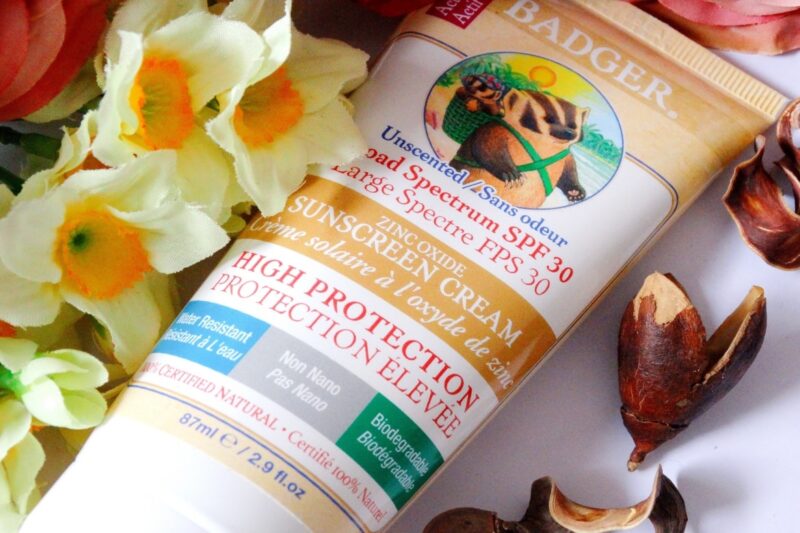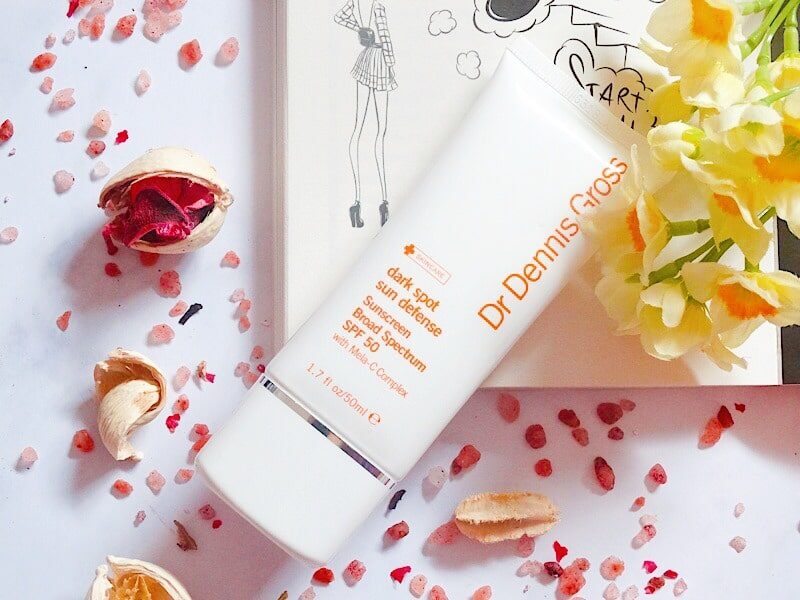
What if I told you that everything you know about mineral sunscreen is a lie?
They create a shield on the skin that reflects UV rays away? Lie.
You don’t have to reapply them? Lie
You can get away with using less? Lie.
I’ll let that sink in for a minute…
I know, I’ve just destroyed all your sunscreen certainties. But I won’t apologise for it. As long as you keep believing in these myths, you won’t get the best sun protection out of your sunscreen and I won’t have that.
Time to smash them, don’t you think? Here are 5 mineral sunscreen myths you need to stop believing right now:
P.S. If you’ve fallen for these myths, don’t kick yourself. We’ve all been there. I used to believe them, too before I delved into the science of sunscreen and learned the truth.
- What’s The Difference Between Mineral And Chemical Sunscreen?
- Mineral Sunscreen Myth #1: Mineral And Chemical Sunscreens Work Differently
- Mineral Sunscreen Myth #2: Mineral Sunscreens Don’t Need To Be Activated By The Skin
- Mineral Sunscreen Myth #3: You Can Use A Smaller Amount Of Mineral Sunscreen
- Mineral Sunscreen Myth #4: You Don’t Need To Reapply Mineral Sunscreens
- Mineral Sunscreen Myth #5: Chemical Sunscreens Absorb Into The Skin, Mineral Sunscreens Don’t
What’s The Difference Between Mineral And Chemical Sunscreen?
A lot of the mineral sunscreen myths are spread to prove their superiority over chemical sunscreens. What’s the difference between these two families?
- Mineral sunscreens: A.k.a. physical sunscreens, they use the white minerals zinc oxide and/or titanium dioxide to provide sun protection.
- Chemical sunscreens: They use synthetic UV filters, like Avobenzone, Octocrylene, Mexoryl and Tinosorb. Literally anything else that’s not zinc oxide and/or titanium dioxide.
Before we go any further, let me get something off my chest. ALL sunscreens are chemical. That’s because everything that’s made of matter – including water and zinc oxide – are chemicals.
The correct, scientific names for these sunscreen families are Organic and Inorganic sunscreens. Can you guess which one is which?
Inorganic sunscreens are mineral sunscreens. Yes, really. That’s because zinc oxide and titanium dioxide don’t contain a drop of carbon.
In chemistry, “organic” means that a substance has carbon, not that it’s natural. Avobenzone & co have their fair share of carbon, so “chemical” sunscreens are the real organic sunscreens. Confused much?
In my opinion, trying to get people to call sunscreen families with their proper names is a futile endeavour that just confuses them more. And if you’re feeling confused, you’ll stop reading and go back to bad habits.
For the sake of clarity, I’ll use the terms “mineral” and “chemical” here. Are you with me?
Related: Chemical VS Mineral Sunscreen: Which One Is Better?
How effective is your sunscreen? Sign up to the newsletter below to receive the “Sunscreen Audit” Worksheet and find out if your sunscreen is really up to the job:
Mineral Sunscreen Myth #1: Mineral And Chemical Sunscreens Work Differently
Rumour has it that mineral UV filters create a shield on the skin. When UV rays hit it, they reflect them away from the face. Chemical UV filters, on the other hand, absorb UV radiation and transform it into heat.
That’s partly true. Chemical sunscreens do work by absorption. With mineral sunscreens, the story is a bit more complicated…
A 2015 study found that “titanium dioxide and zinc oxide provide UV protection primarily via absorption of UV radiation and not through significant reflection or scattering.”
According to this study, “the average range of reflection for zinc oxide and titanium dioxide throughout the UV range was only 4–5% (less than SPF 2), providing minimal UV protection via this mechanism.”
It’s only in the long UVA and visible wavelengths that mineral sunscreens work predominantly by reflection (up to 60%).
You know what that means? Mineral and chemical sunscreens work mostly in the same way.
Mineral Sunscreen Myth #2: Mineral Sunscreens Don’t Need To Be Activated By The Skin
Rumour has it, you need to apply sunscreen 20 minutes before you leave the house because chemical filters need to be activated by the skin. Mineral filters, on the other hand, create a shield on the skin, so they work straight away.
Nonsense. Both mineral and chemical sunscreens are effective straight away. They both work by absorption and they begin the job the second you slather them on your skin. No activation reaction required.
Want proof? Scientists are able to measure how much chemical sunscreen is absorbed by a piece of paper or beads. If it needed to be in touch with the skin to get activated, it wouldn’t work on objects, right?
But then… Why do you need to wait 20 minutes after sunscreen application before going outside? That’s how long it takes sunscreen to settle and dry into an even film on the skin. This way, it’s harder to accidentally wipe it off as you apply makeup or go about your day.
Related: Is Your Foundation Application Messing With Your Sunscreen?

Mineral Sunscreen Myth #3: You Can Use A Smaller Amount Of Mineral Sunscreen
I wish this were true! To get the SPF stated on the bottle, you need to apply 2 mg/cm2 — two milligrams of sunscreen per centimeter squared of skin. This translates into 1/4 of a teaspoon for the face alone (neck excluded).
That’s a lot of sunscreen! The mineral kind tends to have thicker, greasier textures that are harder to pile up on the skin. Wouldn’t it be amazing if you could use half that amount?
You can’t. All sunscreens are tested at 2 mg/cm2. Apply any less than that and you won’t reach the SPF the sunscreen promises you.
P.S. This myth originates from the belief that mineral sunscreens create a shield on the skin. Surely, if that’s how they really worked, all that’d mattered is that you create an even layer – not how much you use to create that layer. Sadly, that’s not how they work.
Related: How Much Sunscreen Do You Really Need?
Mineral Sunscreen Myth #4: You Don’t Need To Reapply Mineral Sunscreens
Again, I wish!
It’s true that mineral UV filters are more stable than their synthetic counterparts. Take Avobenzone, for example. After a couple of hours in the sun, it becomes completely useless!
But just because you’re using stabler filters, it doesn’t mean you don’t have to reapply. You know, why? Just like foundation, sunscreen fades away during the day.
Every time you touch your skin, wipe your mouth, use your phone etc, you’re wiping some of the sunscreen off your face – without even knowing it!
Regular reapplication ensures there’s an even layer of sunscreen on your face at all times. How often do you have to reapply?
This is when things get tricky. There’s no one-size-fits-all answer here. It depends on where you live, how much sun exposure you’re getting, your daily activities… You’ll have to use your judgment on this one.
P.S. If you’re curious to know how I do it, check out my reapplication routine here.
Related: How To Reapply Sunscreen When You’re Wearing Makeup

Mineral Sunscreen Myth #5: Chemical Sunscreens Absorb Into The Skin, Mineral Sunscreens Don’t
How do you think chemical UV filters protect your skin from UV rays? I know, I know, they turn them into heat, blah blah blah…
But they wouldn’t provide much sun protection if they did that after your skin absorbed them, would they?
Truth bomb: UV filters need to stay on the surface of your skin to work and catch UV rays before they can harm your skin cells.
It’s true some UV filters, like Avobenzone, can get into the body (and out through the urine before it can harm you – just because it gets through, doesn’t mean it’ll kill you!).
This is something that formulators are trying to avoid. It’s easier with mineral filters. They’re bigger molecules and often coated in silicones, which makes it harder for them to get past the skin’s protective barrier.
But the bulk of UV filters does stay on your skin. If they didn’t, they wouldn’t pass the SPF test!
Related: Is Avobenzone Dangerous?


I love hearing you remind all of us that everything is a chemical! As far as stability…are some of the Asian UVA sunscreen ingredients more stable than the traditional ones?
Kathleen, yes they are. 🙂
The last researches showed that almost all ” chemical ” sunscreen get aboserd, in particular avobenzone. We don’t know yet in witch way they can hurm us because nothing good comes from that and it needs alot of tests and time. Imagine you go to vacation somewhere at the sea, how much sunscreen you use. Another point of view, at least theoretical, “chemical” sunscreen produce radical damage in a low concentration to the skin. Also try and apply ” chemical ” sunscreen around your eyes, they will sting after a period of time and it will induce irritation to inflammation to faster aging. The only reason that I use mineral sunscreen is the fact that is not irritating, quite opposite and it doesn’t get absorbed in my blood.